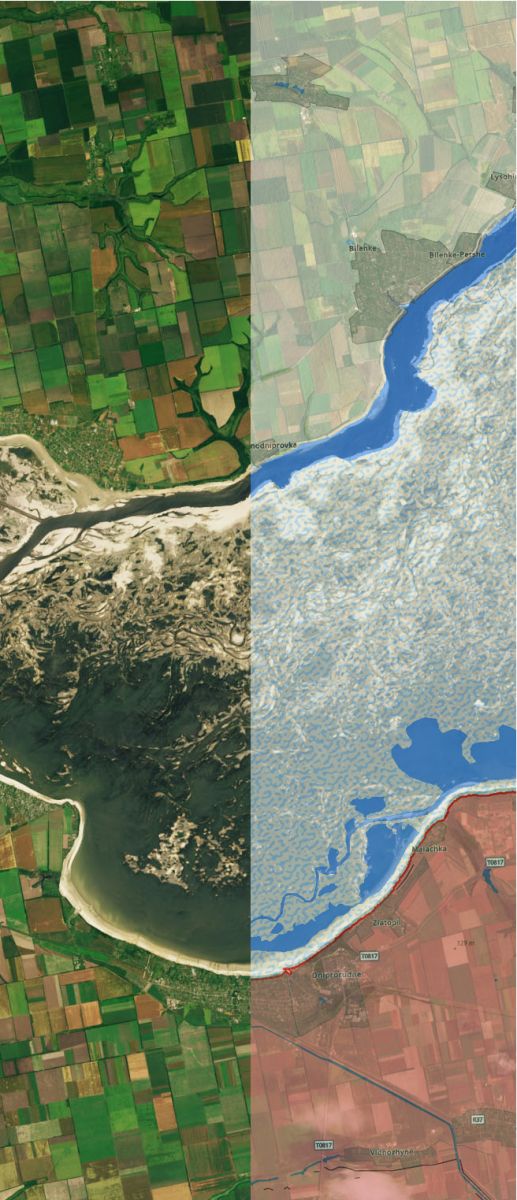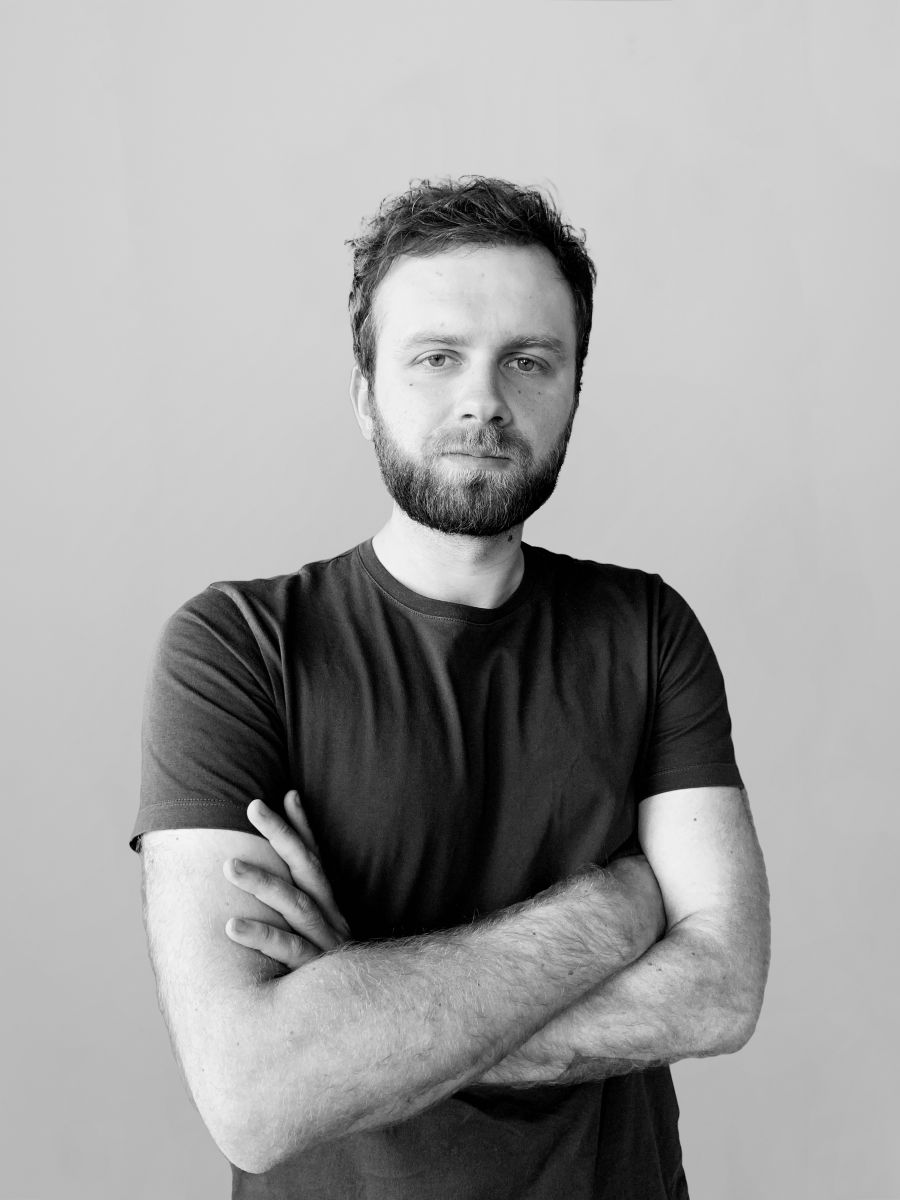table-5 Table 5 The Space that Water Leaves Behind
As a direct result of the destruction of the Kakhovka Dam, a dramatic chain reaction was enacted in the water systems upstream. The former Kakhovka reservoir (which was at some points up to 20km wide) would have shrunk to the pre-Soviet banks of the Dnipro River. Pumps would have slowed as kilometers of canals laid for irrigation of Steppe landscapes slowly run dry. One could imagine watermelons trained to grow on the life support of heavily irrigated upland Ukrainian soil shrivelling on their summer stems.
Along a typical transect of the Dnipro River upstream from the dam, three new landscapes emerged:
1. Formerly waterfront cities on the northern bank under Ukrainian control were suddenly foregrounded by long stretches of exposed flats stripped of nutrients and life.
2. The irrigation canals on the southern banks together with the scars of ongoing trench warfare and fields of landmines along the front line create two systems of pits vulnerable to the rains and erosion of the coming winter.
3. In between, the naked bed of the former reservoir whispers with memories of the cradle of Ukrainian history and the organisms that called the reservoir home for the last 70 years.
Each of these new landscapes present opportunities for rebuilding and shaping of the land in a post-dam reality. The layers of floodplains, villages, and water ecosystems of the past call to those of the future. What are the opportunities for 21st century farming, city building, and ecological restoration that the water has left behind?
Drawing inspiration from international precedents, and through the process of iterative large-scale hand sketching, this workshop table will encourage the exploration of new alternative futures of these three sites along a transect of the Dnipro upstream from the Kakhovka Dam. Together they could act as a blueprint for the region. Participants will be encouraged to design and think systemically, considering how their proposals operate in terms of ecology and biodiversity, cultural landscape, and time scale. Which plants, animals, or people will fill the space that the water leaves behind? Where will the water be welcomed back and how? Which version of history will be restored or preserved?

 Shelley Long is a Canadian landscape architect at West 8 urban design & landscape architecture. She holds a Bachelor of Environmental Design from the University of British Columbia and a Master of Landscape Architecture from the University of Toronto. Her design research focuses on how landscape defines our role as people in nature in the anthropocene, and how landscape can mediate and influence national identity.
Shelley Long is a Canadian landscape architect at West 8 urban design & landscape architecture. She holds a Bachelor of Environmental Design from the University of British Columbia and a Master of Landscape Architecture from the University of Toronto. Her design research focuses on how landscape defines our role as people in nature in the anthropocene, and how landscape can mediate and influence national identity.
After working for 5 years as a landscape architect and Adjunct Professor, Shelley moved to the Netherlands to deepen her interests in systemic design, infrastructure, and the relationship between people and their landscapes.
Since 2018 Shelley leads complex international projects from West 8’s multicultural Rotterdam office which has been active for 35 years on the banks of the Nieuwe Maas river. Her portfolio focuses on long term clients and legacy projects of West 8 including the Toronto Central Waterfront, Schiphol Airport, and Jubilee Gardens in London.

Nazar Dutko is a Ukrainian architect at West 8 urban design & landscape architecture. He holds a Master of Sustainable Architecture from the University of Leuven, Belgium and a Master of Architecture from the Kyiv Nation university of Construction and Architecture in Ukraine. In addition to his strong capability in aesthetic forms of expression, he is keen on making use of his knowledge of sustainable architecture to developing innovative landscape design of various scales.
Since 2016, Nazar has led and provided key input across a wide range of international projects within West 8’s Rotterdam office, from strategic urban design to small scale landscape interventions. Nazar is committed to applying both environmental and a socio-economically sustainable insights within the multidisciplinary process at West 8. Most recently, Nazar is working on a flood-resilient urban plan in Meerstad (NL) and Ecologically-sustainable master plan for Pirotan Island in India.
Table 1 Future proof just land use and land ownership
Table 2 Innovative Rainwater Management
Table 3 strategies for regeneration of the river bed and river
Table 4 BACKWARDS FREESTYLE
Table 5 The Space that Water Leaves Behind
Table 6 free fertile land
Table 7 System mind-mapping
Table 8 Great meadow
Table 9 Urgent Urbanism

